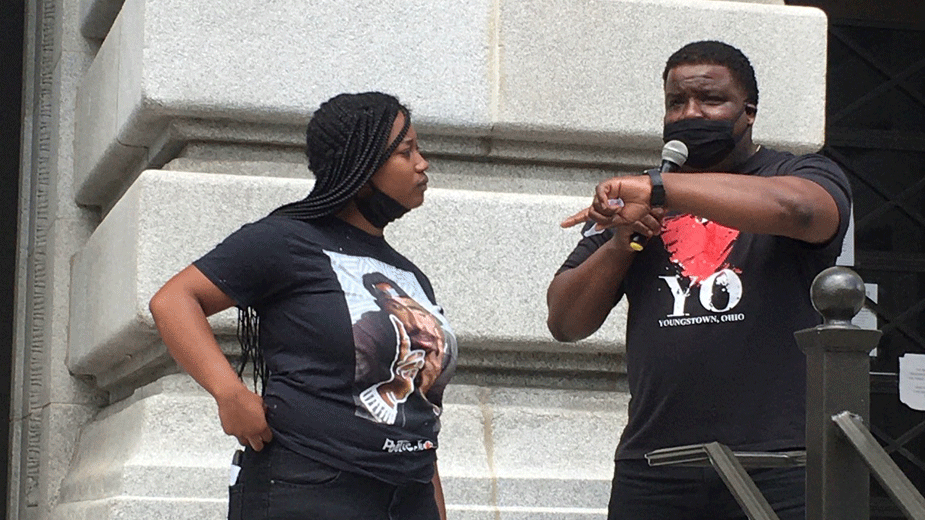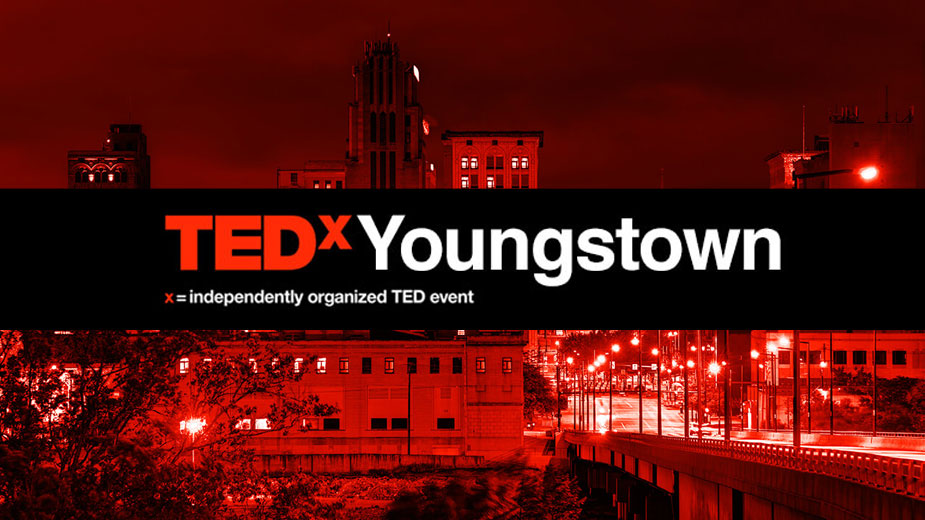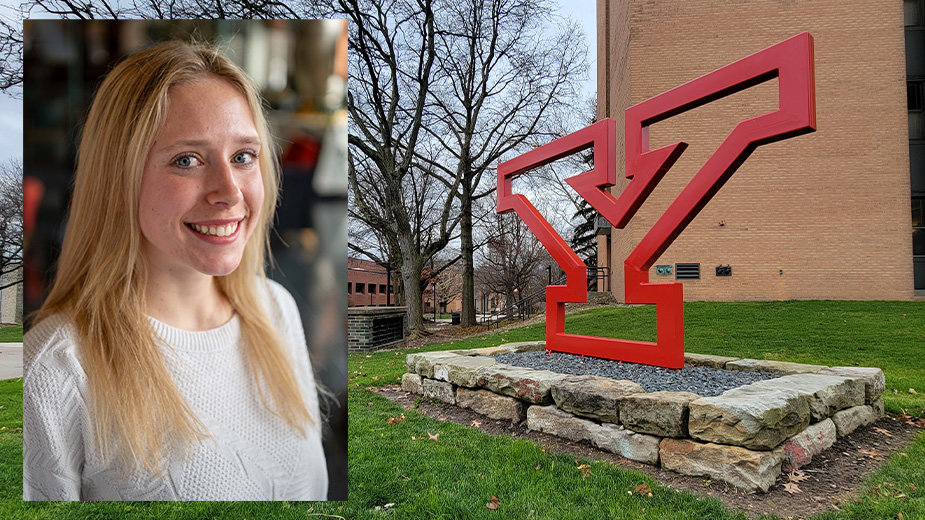Young Leaders Work To Heal Racial Divides
YOUNGSTOWN, Ohio – The video-recorded death in Minneapolis of George Floyd, begging to breathe under the weight of a white police officer’s knee, galvanized protesters and created a virtual groundswell worldwide. Here, before meetings or calls for action from the pulpit, two young women used their social media platforms to organize peaceful protests against racial injustice in Youngstown and Warren. And with the click of a share button, community leaders were born.
“I just think people are fed up. We’ve all seen the video and there was nothing to justify what happened. And it’s like, how much more do we have to take?” asks Youngstown native and Ohio State University student Sonia Lenoir.
She felt the need to do something. Like most people her age, the 19-year-old was checking Facebook to see what was happening in Youngstown.
“The week after he died, in the city, it was like it didn’t happen. They just carried on with their lives and it was like nobody is seeing what’s going on in the world; nobody cares. So, If I didn’t step out and bring awareness to the situation, nobody would have thought about it or even cared to make a change in the city because the city is just so corrupt,” Lenoir asserts. “People are just living because that’s all they can really do. I feel it can be better and it starts with your own community. You have to build your community to make things better.”
The March for Justice May 31 in Youngstown saw more than 600 protesters walk down Wick Avenue to the steps of the Mahoning County Courthouse where several speakers addressed the diverse crowd.
Like Lenoir, Ty’onna Powell, 20, a graduate of River Gate High School, was hurting after she saw the video of Floyd’s death; and she, too, refused to sit in silence. Her goal was to bring unity to Warren with the We Matter Movement held June 1.
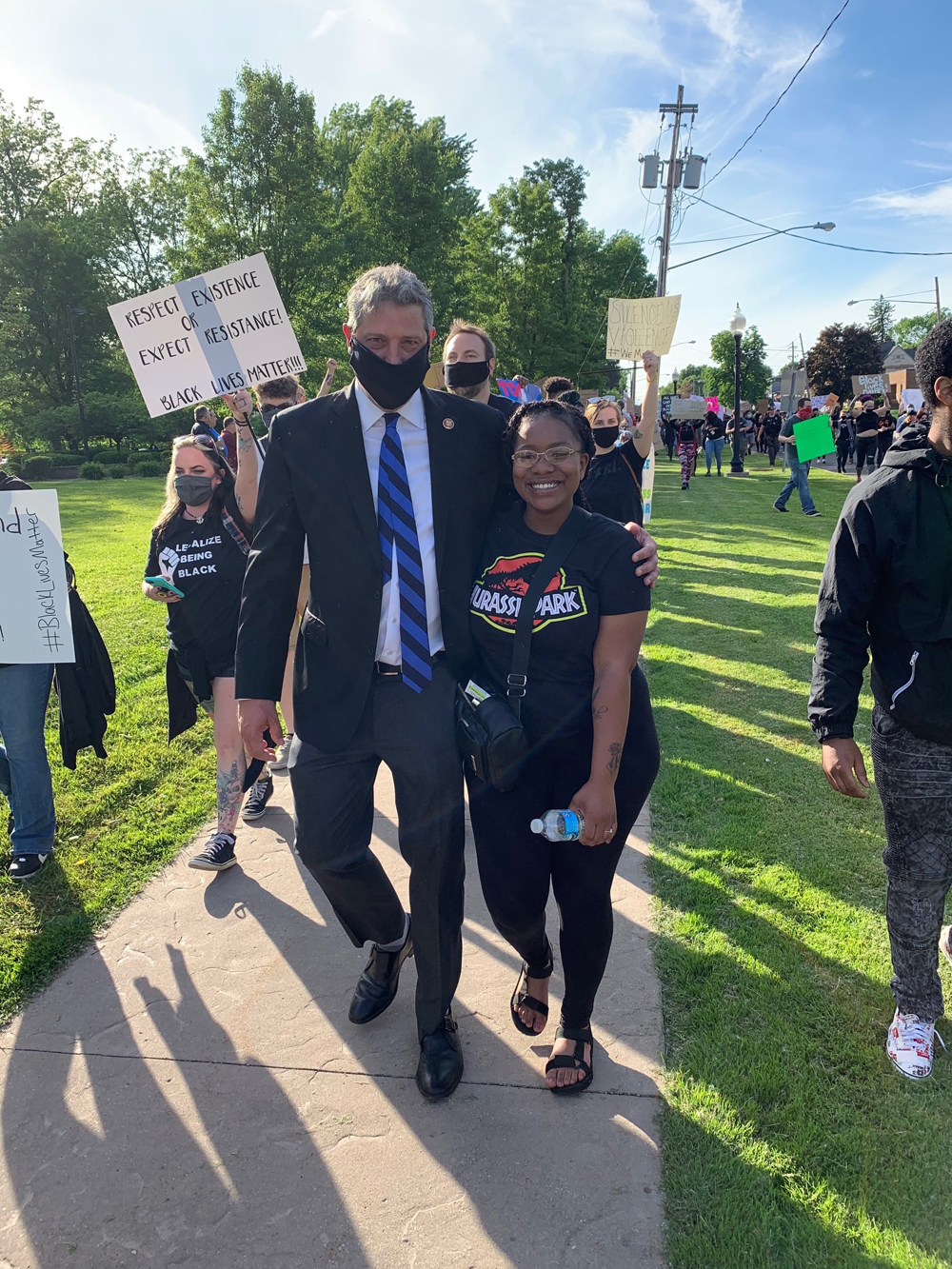
At least 1,000 people of all ages and races showed up for the peaceful protest, which Powell says blew her away. “I want this to be about love and positivity. We need each other right now,” Powell says. “We have been divided for too long; whites and blacks, systems versus people. Unity is possible – even in our city – and that will be the greatest change for us. We can come together.”
Hearing young leaders like Lenoir and Powell talk about people working together to bring racial change gives hope to historian, author, lawyer, and political activist Staughton Lynd.
Lynd was a graduate student in history at Columbia University in 1961 when he moved south to teach African American women at Spelman College in Georgia. In the summer of 1964, he was in charge of and coordinated Freedom Schools in Mississippi as part of the Freedom Summer civil rights project. Besides teaching at the temporary alternative schools, volunteers conducted voter registration efforts and established the Mississippi Freedom Party that sent delegates to the Democratic National Convention in Atlantic City, New Jersey.
Acknowledging Floyd’s death was a horrific tragedy, Lynd says that what transpired nationally as a result to create change is nonetheless thrilling.
“It’s an incredible expression of one city acting as a model for the next. Although I’m 90 years old and I didn’t take part in any of the demonstrations, even here in little Youngstown, Ohio, I think it could be a turning point in the nation,” Lynd says. “I’m very hopeful. I can’t think of an event in the last several years that’s made me as hopeful and excited as these protests – not the reason for the protests, but the protests.”
In Lynd’s opinion, having a large number of white protesters might be key to policy changes. He recalls the same feeling in the 1960s when white and black protesters were working for the same cause, but “I don’t think the black movement has always helped itself when it’s kind of organized alone. And this is much more hopeful for everyone concerned,” he says. “One of the things that makes me feel that is seeing black and white people involved. They are both in the streets and everybody seems to be getting along with everybody. And that is so refreshing after so many years.”
Despite early rioting that led to violent and sometimes deadly outcomes, looting, arson and vandalism to businesses, the protests have tapered off and are mostly peaceful.
“Alice [his wife] and I are Quakers, and I have been an advocate and practitioner of nonviolence since the GM strike of 1945 when I was growing up in New York City. There have been years when if you uttered the words nonviolence, you were a limousine liberal, a sellout and so on. I never agreed with that,” Lynd reflects. “Despite the fact that some took advantage of civil rights protest to engage in looting, and whatnot, that really was secondary to the essentially nonviolent action of the great mass of those who protested.”
The reality of injustice, inequality and violence suffered by Americans with darker skin tones is not new.

What is new, says Penny Wells, director of Mahoning Valley Sojourn to the Past and chairwoman of the Nonviolence Week Committee, is “people could actually see for eight minutes and 46 seconds – because of social media – George Floyd actually die.”
Like Staughton and Alice Lynd, Wells took part in the Civil Rights Movement of the 1960s. She was a student at Brown University following the passage of the Voting Rights Act of 1965. She and other students drove to Choctaw County, Alabama, to register voters and stayed in the homes of black residents.
“Things happen in history. Rosa Parks gets credit for starting the bus boycott. But actually, she was not the first person to not give up her seat,” Wells notes. “Claudette Colvin was a 15-year-old girl who one afternoon decided, ‘I’m tired. I’m coming home from school and I have all of these books in my hands. I’m not giving up my seat,’ but she didn’t happen to be the catalyst that started the movement. Something is the trigger point. Something has to be the catalyst and George Floyd was the catalyst.”
For protest organizer Powell, the difference is social media – the way Amazon, Hulu, Twitter and other social platforms are recognizing the issue.
“They’re putting it into their movies and their music and putting it on tweets. And with the younger generation being the majority of social media users, when they see their influencers post something like that, for some odd reason, they’ll listen to the influencers even before their own parents,” Powell says.
“President Obama and prominent women like Kerry Washington are speaking out and using their platforms like never before. We realize there’s more of us than less of us. I feel the power of social media, sometimes, can be used as a bad thing. But it also is a powerful tool to expand the mind.”
Wells agrees about social media. “We’ve galvanized people in a way that is reminiscent of the ’60s and it’s gotten bigger, partly because we can connect people so easily through social media. We just can’t let the momentum die before we have some major, major reforms,” she says.
Wells believes change needs to happen through legislation and meaningful dialogue.
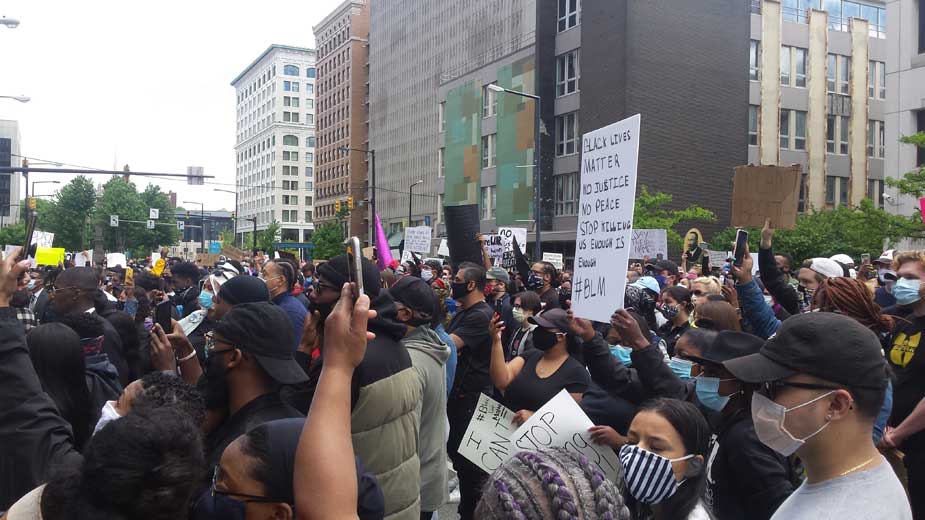
“We need to keep dialogue flowing among those of us who are white and looking at ourselves and being able to listen to African Americans when they speak and not be afraid to do that,” she says.
Open, honest discussions are how Powell and Lenoir believe change will occur. After the protests, U.S. Rep. Tim Ryan, D-13, Ohio, invited them to lunch to thank them for their leadership efforts and to connect with them for future projects.
“That’s what it all comes down to, talking to people to see what kind of solution you can create out of their problem. You have to reach out to everyone,” Powell says. “We have to get to the root of the problem. If you’re chopping down a tree, a tree is going to grow back if you don’t get it from the root and actually stop the growth.”
She continues, “For us to start, we have to be able to listen to each other. To be able to come together, speak from different perspectives, accept it and take responsibility if you need to. After that, you have to figure out how to become the solution instead of making more of a problem.”
Lenoir and Powell are discussing hosting open mic nights in their communities.
For Lenoir, entry to such an event would come with a cost. “You must be registered to vote or register at the event in order to take part,” she says.
Members of the clergy are hosting an open dialogue between the black community and law enforcement at 6 p.m. June 23 at New Bethel Baptist Church, 1507 Hilman St., Youngstown.
Wells says Sojourn to the Past students are developing anti-racism workshops that can be presented to small businesses, civic and church groups and educators. The workshops, which begin in July, will examine history, how the system has been inculcated in individuals and how to look inward and challenge ourselves.
“Our society, white people, are looking at things in a different light, which is wonderful,” Wells says. “But we need to keep moving forward. We can’t let this infection and movement for social justice and looking at systemic racism die down when the marching stops.”
Pictured at top: Sonya Lenoir, who coordinated the Youngstown March for Justice protest, receives praise for her efforts from Youngstown Mayor Jamael Tito Brown.
Copyright 2024 The Business Journal, Youngstown, Ohio.
